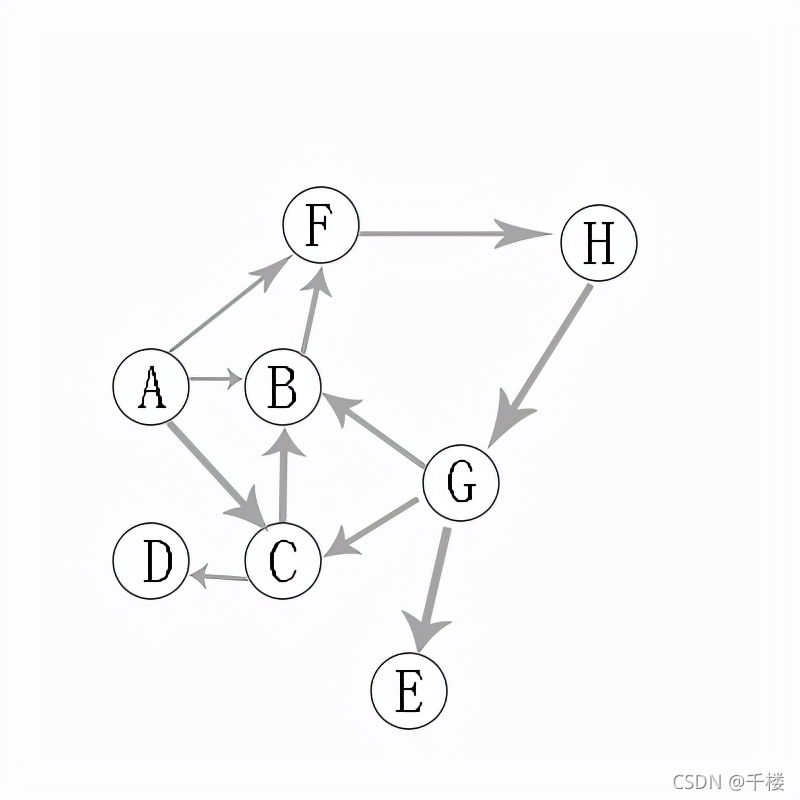图的遍历:从图中某一顶点出发访问图中其余顶点,且每一个顶点仅被访问一次
图有2种常见的遍历方式(有向图、无向图都适用):
-
广度优先搜索(Breadth First Search,BFS),又称为宽度优先搜索、横向优先搜索
-
深度优先遍历(Depth First Search, DFS)
广度优先搜索
- 理解
类似于树的层序遍历


无向图,从A点开始
第一层: A
第二层: B C D F
第三层: G E H
所以,最终的遍历顺序:A -> B -> C -> D -> F -> G -> E -> H
2)代码实现(请先学习上一篇文章:图(Grapth)):
@Override
public void bfs(V begin, VertexVisitor visitor) {
//获取起点
Vertex<V, E> beginVertex = vertices.get(begin);
if (beginVertex == null) {
return;
}
//记录已经遍历过的节点
Set<Vertex<V, E>> visitedVertices = new HashSet<>();
Queue<Vertex<V, E>> queue = new LinkedList<>();
//将起点加入队列
queue.offer(beginVertex);
while (!queue.isEmpty()) {
//获取队列的元素
Vertex<V, E> vertex = queue.poll();
//遍历
visitor.visit(vertex.value);
//已经遍历过的添加到集合中记录下来
visitedVertices.add(vertex);
//将该顶点的出度节点或者说以这个顶点为起点的边,遍历,获取到另外端点
vertex.outEdges.forEach(edge -> {
//如果没遍历过就加入到队列中
if (!visitedVertices.contains(edge.to)) {
queue.offer(edge.to);
}
});
}
}
深度优先遍历
1)理解
从一个顶点出发,沿着当前顶点的边走到未访问的顶点,直到没有未访问过的顶点时,返回上一个顶点,继续试探别的顶点,直到所有顶点都被访问过。

从A出发,邻接点有 B C F,假设 下一个访问节点 B,那么, A B F H G C D E
在访问到G顶点时候,可以访问的下一个节点有 C E,假设是 C ,那么就是 C D ,然后返回到G,然后继续访问E。
2)代码实现
private void dfs(Vertex<V, E> beginVertex, VertexVisitor visitor) {
Stack<Vertex<V, E>> stack = new Stack<>();
//记录已经访问过的节点
List<Vertex<V, E>> visitedVertex = new ArrayList<>();
stack.push(beginVertex);
visitedVertex.add(beginVertex);
visitor.visit(beginVertex.value);
while (!stack.isEmpty()) {
Vertex<V, E> vertex = stack.pop();
vertex.outEdges.forEach(edge -> {
//没有访问过的
if (!visitedVertex.contains(edge.to)) {
stack.push(vertex);
stack.push(edge.to);
visitedVertex.add(edge.to);
visitor.visit(edge.to.value);
}
});
}
}